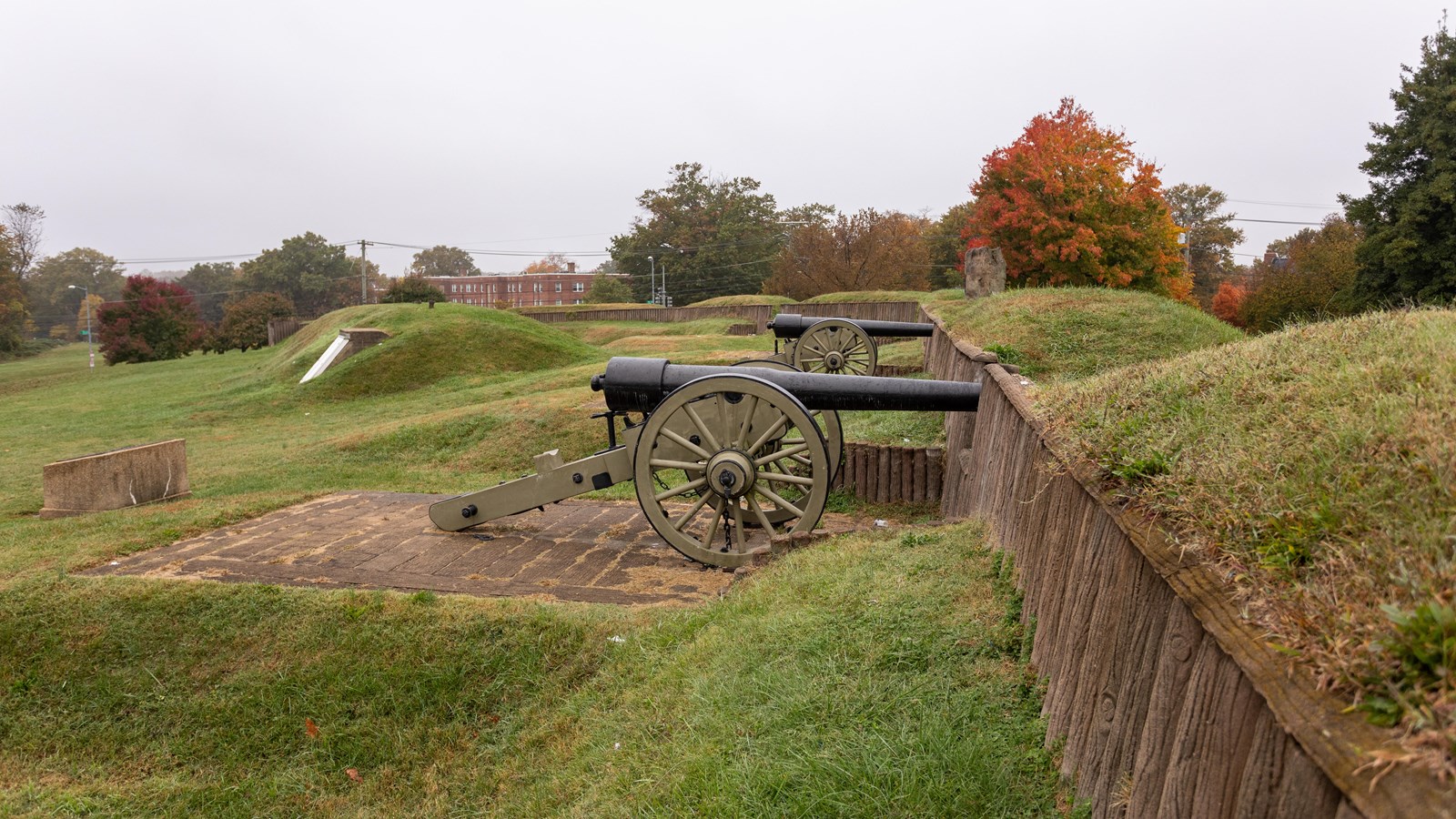Last updated: June 26, 2025
Place
Fort Stevens

NPS / Claire Hassler
Historical/Interpretive Information/Exhibits, Scenic View/Photo Spot
Fort Stevens, now partially restored, was built to defend the approaches to Washington from the 7th Street Pike (now Georgia Avenue) which was then the main thoroughfare from the north into Washington. Originally called Fort Massachusetts by the soldiers from that state who constructed the fort, it was later named after Brig. Gen. Isaac Ingalls Stevens, who was killed at the Battle of Chantilly (Ox Hill), Virginia, September 1, 1862.
By the summer of 1864, the great bulk of Union troops in the east were engaged in siege operations around Petersburg, Virginia. In fact, when Ulysses S. Grant moved south in the Spring of 1864, he stripped Washington, DC, of many well trained troops to add weight to his offensive. As a result, in July of 1864, there were only 9,000 troops to defend the city, down from over 23,000 the year before. Those that were left were primarily poorly trained reserves. Robert E. Lee was desperate to reduce the pressure on his forces around Petersburg, and so decided to send General Jubal A. Early and about 20,000 troops to strike at Washington which spies had reported was poorly defended.
On June 12, Early began his march north from Petersburg and by July 9, was at Frederick, Maryland, where he demanded and received $200,000 to spare the city. On the same day, Early defeated Union Gen. Lew Wallace at the Monocacy River. In the light of later events, Wallace's defeat after a stubborn fight became a victory for the Union because he was able to delay Early's advance for a day. On July 10, Early encamped at Rockville, Maryland, only 10 miles from Fort Stevens.
Reacting to this threat to Washington, Grant ordering the 1st and d 2nd Divisions of the 6th Corps and part of 19th Corps to the capital on July 7. The veteran units reached Fort Stevens arrived off the Potomac River around noon on July 11 as Jubal Early's lead elements advanced toward the capital.
Over the following several days, Early probed Fort Stevens and its environs but never mounted a full-scale attack. Union reinforcements had reached Washington and Fort Stevens just in time.
Located atop the parapet of Fort Stevens is a commemorative stone dedicated to Abraham Lincoln. On July 12, 1864, the President stood atop the parapet to observe the fighting and came under fire from Confederate sharpshooters. It is the only time in American history in which a sitting president came under direct fire from an enemy combatant.
In the years to come, many individuals would claim the honor of advising the President Lincoln to come down from the parapet. The most notable was a young officer named Oliver Wendell Holmes, Jr. His remarks to the president were short and straightforward: "Get down, you damn fool!" Holmes would eventually serve as a justice on the U.S. Supreme Court, 1902-1932.
Each year, the anniversary of the Battle of Fort Stevens is commemorated with special programs, living history, and more.
- Duration:
- 2 minutes, 5 seconds
An overview of the Civil War Defenses of Washington, the roles of Fort Stevens and other forts in the Civil War, and how park visitors can experience these places today.
